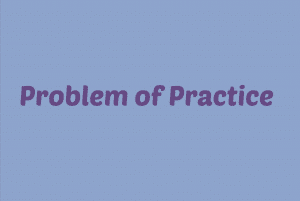What Not To Do: Six Problematic Practices in the Transition to Competency Education
CompetencyWorks Blog
 Implementation mistakes cause harm in both the short run and the long run. In the short run, students may be receiving mixed messages that can impact learning, engagement, and motivation or result in inadequate support. In the long run, it harms the competency education movement.
Implementation mistakes cause harm in both the short run and the long run. In the short run, students may be receiving mixed messages that can impact learning, engagement, and motivation or result in inadequate support. In the long run, it harms the competency education movement.
There are always going to be concerns raised by those who oppose competency education based on an ideological or political standpoint such as anti-standards, a wish to return to covering content, and an enduring fear that communism may rear its head if we hold high expectations for all students. However, the larger threat to advancing competency education is shallow or one-off implementation and failure to not address problems of practice . (Please see David Ruff’s article Six Fixes for Proficiency-Based Learning.)
The risk of poor implementation is that competency-based education becomes defined by the problems in the field rather than a definitional, aspirational, or research-based approach. Can you imagine describing the field of medicine, journalism, or agriculture by the errors, missteps, or bad actors? This is why building a field with an agreed upon working definition, design principles, and quality standards is important. Otherwise we leave ourselves to being defined, as in this case, by poor practice.
The Critics Are Our Friends
The fact of the matter is when our critics comment on problems of practice they are often right to do so. We need to take these types of critiques seriously and correct them. These practices are likely to be problematic unless a highly developed model is in place. At CompetencyWorks we refer to problems of practice as “red flags” – indicators that practices have been introduced too soon, too quickly, or with inadequate understanding of what a high quality competency-based system is. Thus, we are laying ourselves open to criticism if we don’t get on top of the quality issue.
These implementation problems tend to get attention in local papers in the states that have set a clear vision for a competency-based system. The reason: Those districts (my best guess is about one-third of all districts) that begin to make the transition do so with a compliance orientation and fail to set the shared vision, culture, and foundation for competency-based education. They introduce practices that might be effective in a high quality system, but create all kinds of trouble for teachers and students as standalones.
Colleagues have also noted that national organizations sometimes advance these practices. This is a call to all of us working at the national and regional level to check ourselves: Are we advancing ideas that may, as standalone practices, weaken or even lead to the demise of the competency education movement? I’ll make you a bet I’ve done it here at CompetencyWorks without really thinking about the consequences. Anyone want to be my critical friend and help me catch problematic guidance?
David Ruff provided a shortlist of the implementation problems that trigger immediate reactions from parents and teachers. I’ve been thinking about his list and have jotted down some thoughts including some of the pieces that need to be in place in order for these practices to become part of a powerful system rather than standalone practices that are counterproductive. What other problems of practice have you seen in your state?
Read the Entire Series:
- Introduction – What Not To Do: Six Problematic Practices in the Transition to Competency Education
- Part 1 – Missteps in Implementing Competency Education: Introducing Grading Too Early
- Part 2 – CBE Problems of Practice: Attendance Requirements
- Part 3 – CBE Problems of Practice: Self-Pace and Faster is Better
- Part 4 – CBE Problems of Practice: Individualizing Learning
- Part 5 – CBE Problems of Practice: Granularity on Advance Upon Mastery is Too Small
- Part 6 – CBE Problems of Practice: Late Work
- Part 7 – What to Do When the Field Goes “Mustard”